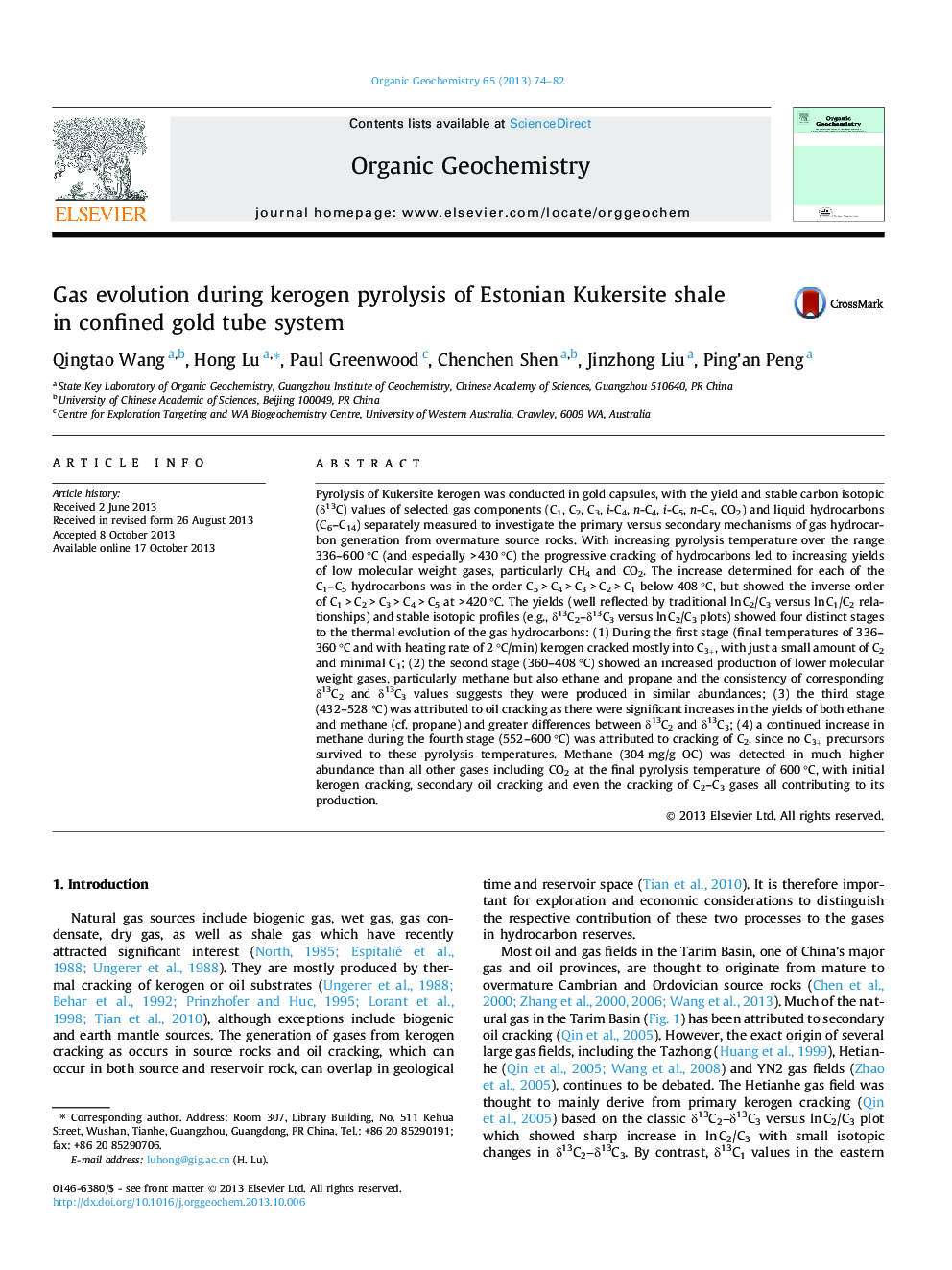| کد مقاله | کد نشریه | سال انتشار | مقاله انگلیسی | نسخه تمام متن |
|---|---|---|---|---|
| 5162537 | 1502296 | 2013 | 9 صفحه PDF | دانلود رایگان |
عنوان انگلیسی مقاله ISI
Gas evolution during kerogen pyrolysis of Estonian Kukersite shale in confined gold tube system
ترجمه فارسی عنوان
تکامل گاز در طول پریولیزه کروژن اسالم کوکرسیت استونی در سیستم لوله طلای محدود
دانلود مقاله + سفارش ترجمه
دانلود مقاله ISI انگلیسی
رایگان برای ایرانیان
موضوعات مرتبط
مهندسی و علوم پایه
شیمی
شیمی آلی
چکیده انگلیسی
Pyrolysis of Kukersite kerogen was conducted in gold capsules, with the yield and stable carbon isotopic (δ13C) values of selected gas components (C1, C2, C3, i-C4, n-C4, i-C5, n-C5, CO2) and liquid hydrocarbons (C6-C14) separately measured to investigate the primary versus secondary mechanisms of gas hydrocarbon generation from overmature source rocks. With increasing pyrolysis temperature over the range 336-600 °C (and especially > 430 °C) the progressive cracking of hydrocarbons led to increasing yields of low molecular weight gases, particularly CH4 and CO2. The increase determined for each of the C1-C5 hydrocarbons was in the order C5 > C4 > C3 > C2 > C1 below 408 °C, but showed the inverse order of C1 > C2 > C3 > C4 > C5 at > 420 °C. The yields (well reflected by traditional ln C2/C3 versus ln C1/C2 relationships) and stable isotopic profiles (e.g., δ13C2-δ13C3 versus ln C2/C3 plots) showed four distinct stages to the thermal evolution of the gas hydrocarbons: (1) During the first stage (final temperatures of 336-360 °C and with heating rate of 2 °C/min) kerogen cracked mostly into C3+, with just a small amount of C2 and minimal C1; (2) the second stage (360-408 °C) showed an increased production of lower molecular weight gases, particularly methane but also ethane and propane and the consistency of corresponding δ13C2 and δ13C3 values suggests they were produced in similar abundances; (3) the third stage (432-528 °C) was attributed to oil cracking as there were significant increases in the yields of both ethane and methane (cf. propane) and greater differences between δ13C2 and δ13C3; (4) a continued increase in methane during the fourth stage (552-600 °C) was attributed to cracking of C2, since no C3+ precursors survived to these pyrolysis temperatures. Methane (304 mg/g OC) was detected in much higher abundance than all other gases including CO2 at the final pyrolysis temperature of 600 °C, with initial kerogen cracking, secondary oil cracking and even the cracking of C2-C3 gases all contributing to its production.
ناشر
Database: Elsevier - ScienceDirect (ساینس دایرکت)
Journal: Organic Geochemistry - Volume 65, December 2013, Pages 74-82
Journal: Organic Geochemistry - Volume 65, December 2013, Pages 74-82
نویسندگان
Qingtao Wang, Hong Lu, Paul Greenwood, Chenchen Shen, Jinzhong Liu, Ping'an Peng,
